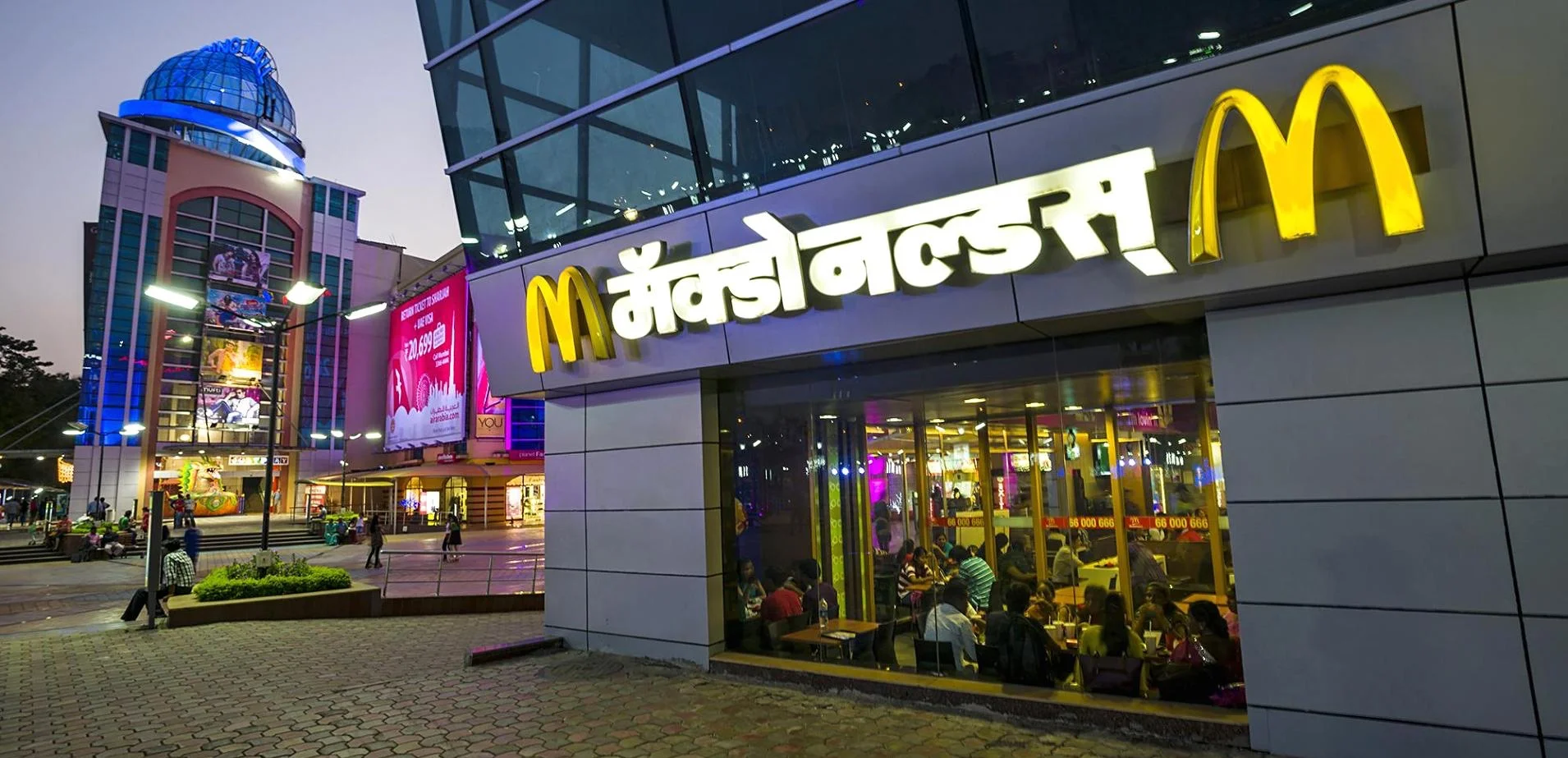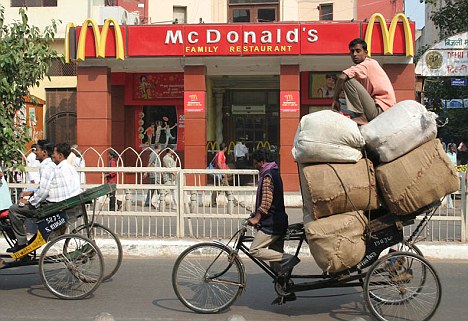McDonald's grew rapidly to 430 outlets in India thanks to two successful joint ventures. One of these joint venture partners is now throwing a spanner in the works, forcing McDonald's to close 169 branches. Three lessons from McDonald's problems in India.
Remarkable success story
McDonald's has been a success story in India for years. A remarkable achievement, because who would have thought that the American hamburger chain would gain a foothold in India? Selling Big Macs in the country where eating cow meat is unacceptable for religious reasons and even prohibited in many states? Good luck. But McDonald's is doing it anyway. The Americans are developing an entirely Indian menu. The McSpicy Paneer (Indian cheese), Aloo Tikki Burger (potato and pea burger) and Chicken Maharaja Mac appeared on the menu.
Affordable, quality and status
But McDonald's is not there yet with these specially adapted products for the Indian market. At the end of the nineties, eating out is a luxury for Indians. Market research shows that of the hundred meals that Indians eat in a month, only three are eaten out of doors. Most of these meals are bought at food stalls, not in restaurants. To get Indians into McDonald's, Americans must therefore compete with these street stalls. This is only possible with extremely competitive prices (read: extremely low margins). The introductory price for the Aloo Tikki Burger was 20 rupees (25 euro cents) at the time; in 2017, it is still only 30 rupees (39 euro cents). This approach works: McDonalds has more than 320 million customers a year in the 430 branches it has built since 1996.
McDonalds India developed a whole new menu for India. This video shows some of the differences.
Problems with Indian joint venture partner
McDonald's owes its meteoric growth largely to its two joint venture partners. The Americans have divided India into two regions: there is a joint venture partner for the north and east of the immense country and one for the south and west. With the partner in the north, there has been trouble for four years. There are problems with hygiene in the restaurants and there are complaints about the quality of the meals. According to the Americans, there is mismanagement and financial irregularities. They wanted to buy out the Indian partner, but the parties could not agree on the price. Meanwhile, McDonald's is involved in two lawsuits: one in Delhi and one in London. Last month the conflict escalated and the Americans decided to close 169 branches in India. In July, 43 McDonald's restaurants in the capital New Delhi already closed their doors. More than 10,000 jobs are at risk. The conflict not only caused enormous financial damage, but also enormous damage to the company's reputation.
Lessons from McDonald's troubles in India
How could things have gone so wrong at McDonald's in India? And what can be learned from the Americans' problems for Dutch companies that have or are considering a joint venture in India? After all, a joint venture is the most popular market entry strategy in India. Logically, a JV with a reliable Indian partner strengthens the credibility of the foreign company in the Indian market, provides a strong network and reduces bureaucratic challenges. But a joint venture is not without risk, as the example of McDonald's shows once again.
1. Take time to find a partner
Indian parties love joint ventures. For them too, a joint venture offers great opportunities: working with a reputable foreign player improves status and offers interesting growth opportunities. It is not for nothing that Dutch parties are regularly surprised with a proposal for a joint venture contract. Companies would do well to take their time in selecting an Indian partner and carry out extensive due diligence on potential partners. Consider carefully in advance what criteria a joint venture partner should ideally meet (knowledge, corporate culture, size, region, experience with other foreign parties, etc). Also realise that choosing a partner in many cases means excluding cooperation with another partner. If you work with Tata, you will not get in at Reliance. This is also true at the regional level where smaller family conglomerates compete with each other. So be aware of the choices you make and gather information from different sources to get a good understanding. Visit India and invite the potential partner to the Netherlands. Investigate how serious the Indian party is and who ultimately takes the decisions, especially if the partner is an Indian family business.
2. Take your time for a solid contract
A joint venture agreement must specifically set out how decisions are made, what the procedure is in the event of a future divorce and where a legal conflict is fought out (preferably in the Netherlands of course, given the huge backlog of Indian courts). Invest in a good Indian lawyer to gain a good understanding of the Indian law surrounding joint ventures and the protection of your intellectual property. Also realise that you can limit your risks by starting several JVs in different states. In this way, you also benefit from the local knowledge and network in these states that these partners have at their disposal. Remember also that the shares of a joint venture do not necessarily have to be divided 50/50.
3. Temporary marriage to achieve a common goal
A joint venture is usually seen by multinationals as an ideal market entry strategy and by definition temporary, but SMEs often see a joint venture as a permanent arrangement. This is where they go wrong. A joint venture is usually a good way to enter the Indian market, but as a permanent construction, a JV rarely works. The reason is simple: after four or five years, the interests of the Indian and the foreign partner diverge. In that respect, it took McDonald's a long time to go wrong. At the start of the cooperation, it is a good idea to agree on decision-making powers, concrete goals and a common roadmap. Don't make it all up, but choose a range and stick to it. Furthermore, make clear from the start that the cooperation is temporary and outline in advance an exit strategy for when the goals of both parties have been reached. The most common scenario: the Dutch party buys out the Indian party and continues as a 100% subsidiary in India. Agreements about the valuation of the company can also be made in advance.


